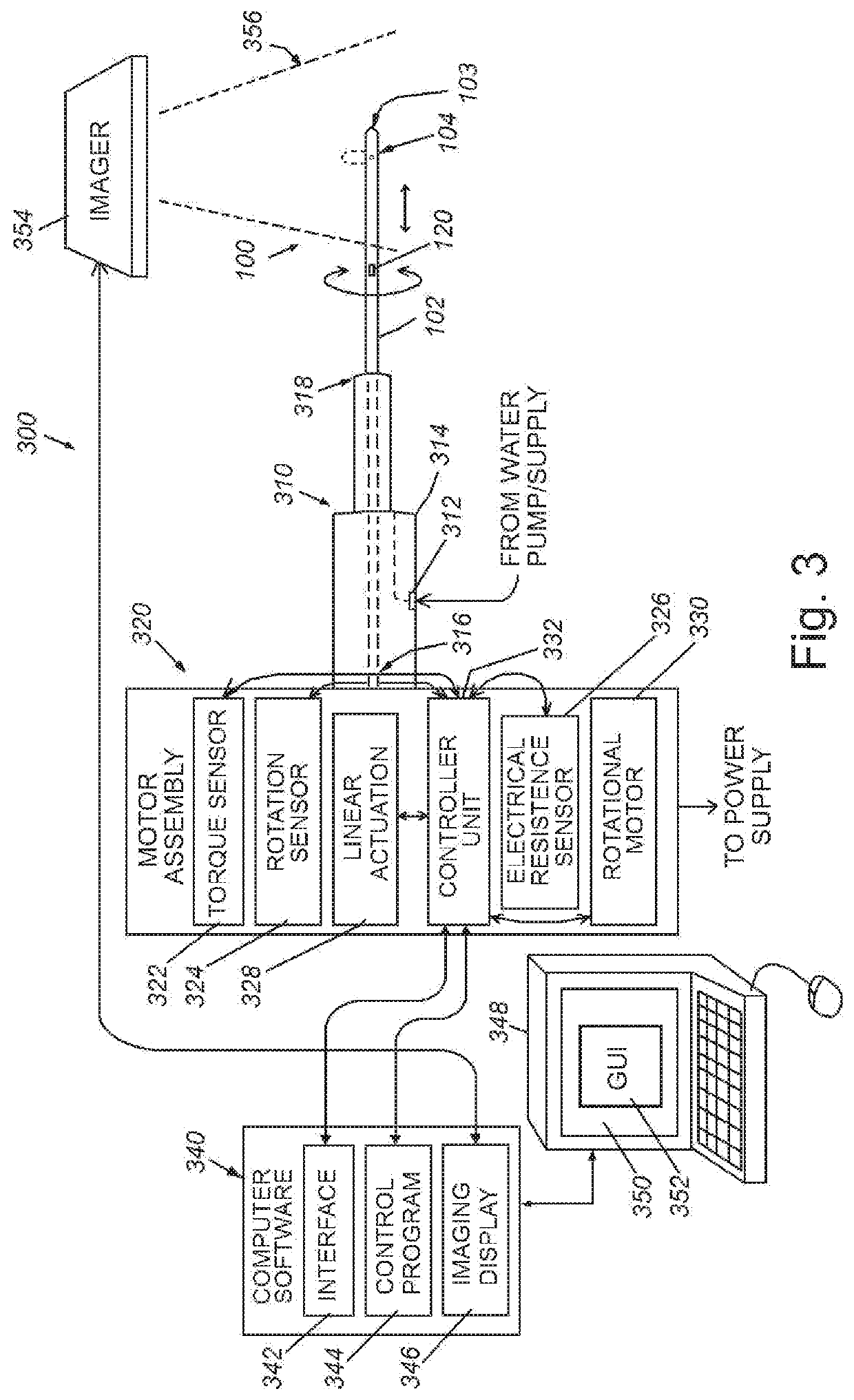System and method for forming a cavity in soft tissue and bone
a technology of soft tissue and bone, applied in the field of devices and methods for forming cavities in soft tissue or bone, can solve problems such as unintended damage and catastrophic problems for patients
- Summary
- Abstract
- Description
- Claims
- Application Information
AI Technical Summary
Benefits of technology
Problems solved by technology
Method used
Image
Examples
Embodiment Construction
[0015]FIG. 1 is a view of a distal end of a drill, according to the background art. A powered drill can include an electric motor, and a drill shaft assembly 100 that can include a drill shaft 102 that is provided with an articulating tip and a plurality of sensors. A distal end 103 of the drill shaft 102 can include an articulating tip 104 that can have a distal tip 122, as shown in FIG. 1, according to the background art. The articulating tip 104 can be capable of movement describing an angle α of up to 90 degrees from a first position oriented to a longitudinal axis 106 that is drawn along the shaft 102 to a second position oriented to a perpendicular axis 108 that is perpendicular to the longitudinal axis 106. The pivoting motion can be activated by the rotational movement of the drill shaft reaching a threshold speed. As the rotational speed increases, the tip's movement can describe an arc. Above a certain threshold of rotational speed, the tip can move into the perpendicular ...
PUM
 Login to View More
Login to View More Abstract
Description
Claims
Application Information
 Login to View More
Login to View More - R&D
- Intellectual Property
- Life Sciences
- Materials
- Tech Scout
- Unparalleled Data Quality
- Higher Quality Content
- 60% Fewer Hallucinations
Browse by: Latest US Patents, China's latest patents, Technical Efficacy Thesaurus, Application Domain, Technology Topic, Popular Technical Reports.
© 2025 PatSnap. All rights reserved.Legal|Privacy policy|Modern Slavery Act Transparency Statement|Sitemap|About US| Contact US: help@patsnap.com



